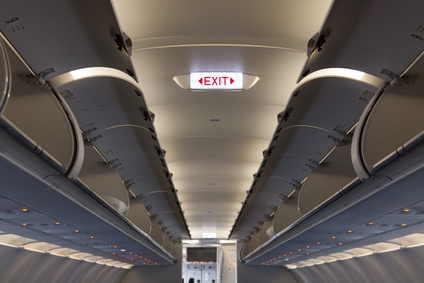
Let’s assume that you’re traveling internationally with your ITAR-controlled product and you have a valid DSP-73 license in place. (If I’ve already lost you with that sentence, then please skip the rest of this article and schedule a no-charge consultation with us today.) Rather than shipping the item to your destination, it makes more sense for you to hand-carry it with you. There are important considerations involved with any hand-carry of an ITAR-controlled item.
First, the sojourn of the product must be exactly as stated on the DSP-73. This means, if your license says “U.S. –> France –> For the Paris Air Show –> Return to the U.S.,” then that’s exactly what you must do. You may not stop in London to demonstrate the item or even take it from the Paris Air Show to a different client in Caen. You also cannot combine separate DSP-73s to carry your item willy-nilly all over Europe (or anywhere else specified on the licenses). For each license, you must first return to the U.S. and then make your next trip.
What if your flight to Paris gets diverted for mechanical issues and you wind up in Belgium? Well, that’s an illegal export to Belgium. Your best bet is to find a U.S. Customs official and explain your situation, but be prepared to have the item seized.
Second, you will be responsible for assuring the security of the item for the entire trip. At no time should you allow Foreign Persons to have access to the item unless they are authorized by the license to do so. You may not leave the item unguarded in your hotel room (unless you have a room safe large enough to contain it, or some other means of safekeeping). It’s also worth noting that a hotel room safe is only considered secure if the combination can be set by the room’s guest (i.e., you, the traveler). If there are any signs of tampering with the safe, notify your company’s export compliance official immediately.
One best practice is to include on your license the trade show organizers, a security company, or some other trusted (and fully-vetted) intermediate consignee who can lock the item up each evening. Another thing to remember is that foreign agents from proscribed countries love to haunt trade shows to exploit (or even steal!) ITAR items. Your license should be specific about who may see the item. If an authorized foreign person needs a demo, you should take that person away from the public eye to do so.
If a U.S. Customs signature is required at the time of export or reentry into the U.S, then you are responsible for securing this signature. Sounds easy, right? What if your flight is delayed and the local Customs office is closed when you get there? This happens all the time. The signature or license decrementation requirement doesn’t disappear because you arrived at your destination at midnight instead of noon. You could find yourself having to postpone your flight home until you can obtain Customs clearance, not to mention that you will still need to keep the ITAR item secure.
Finally, remember that hand-carried items may also require payment of duties and taxes in the foreign country. You, the traveler, are responsible for paying these duties or taxes. Furthermore, if an Automated Export System (AES) record is required, then you’re responsible for ensuring that an AES record is submitted within two hours prior to departure of your flight.
Despite all of these considerations, hand-carries can be an effective way to move ITAR-controlled items to foreign destinations. Just make sure you’re aware of all the requirements before stepping on the plane.
Understanding ITAR FAQs
Tom Reynolds is the President of Export Solutions, a consultancy firm which specializes in helping companies with import/export compliance.
